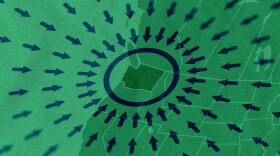Genetic information from Kennewick Man shows the Bering Land Bridge may not have been the only route humans used to migrate to North America more than 10,000 years ago.
A new study published in the Proceedings of the National Academy of Sciences uses genetic data from four skeletons found along the coast of Northern British Columbia and Southeast Alaska. Scientists compared that information to Washington’s Kennewick Man and Montana’s Anzick child.
Kennewick Man’s only certain relatives come from Washington state and include members of today’s Colville Indian Tribe as well as people who lived in Interior British Columbia, but not people who migrated across the Bering Land Bridge.
The Montana remains are linked to indigenous groups from Central and South America, that’s one possible migration route, according to Professor Ripan Malhi of the University of Illinois Urbana-Champaign.
“Or it could be that there was another movement from northeast Asia later on in time,” Malhi said.
Scientists studied the nuclear genome from the ancient skeletons that range in age from 1,500 to 10,000 years old.
“The nuclear genome is the vast majority of the DNA that you have in a cell and it provides you information about all of your ancestors,” Malhi said.
Other studies previously made use of mitochondrial DNA, but that only shines light on an individual’s maternal ancestry. Malhi said this new study provides a more complete picture of ancestry for native people along the Northwest coast of Alaska to Prince Rupert, British Columbia.
Copyright 2017 Northwest News Network







